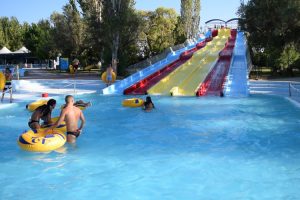The National Park of Kerkini Lake (Serres region) in Northern Greece is a famous destination for ecotourism, and particularly for bird watching. In winter, there is an opportunity to contemplate a truly unique spectacle – flocks of pelicans swimming in the lake against the background of snow-capped mountain peaks.
A large population of Dalmatian pelicans inhabits in the National Park. Dalmatian pelicans have curly nape feathers, silvery-white plumage, an orange-red gular pouch and silver wings. The Dalmatian Pelican is the most massive member of the pelican family, and perhaps the world’s heaviest among all flying birds in the world as well.
Pelicans are the migratory birds, but here on Kerkini Lake they live all year round. The fact is that local fishermen feed the pelicans in winter, therefore they no longer have reasons for migration. Pelicans help to control the growth of the Cormorant population, thereby supporting the healthier ecosystem of Kerkini Lake.
Set aside your duty binoculars – friendly pelicans get used to the human presence and come very close. Here you can watch closely these amazing huge birds in their natural environment.
The biological variety of species inhabiting the National Park of Kerkini is very large. In total, around 300 species of wild birds, including flamingos and storks, inhabit the area around Kerkini Lake. Some species of birds are considered endangered and are found only here. In addition to birds, Kerkini National Park is inhabited by amphibians, reptiles, mammals, fish, plants and invertebrates, including species new to science.
The largest number of buffaloes of Greece inhabit in the area of the Kerkini Lake. For these animals the wetlands are a very comfortable habitat.
Even if you are not a professional photographer, once you visit the National Park of Kerkini, you will surely take with you the outstanding photo and unforgettable impressions, and certainly want to come back here again.
How to get there
Kerkini Lake located in Northern Greece, Macedonia, in the northeast of the region of Serres, within 20 km from the border with Bulgaria.







